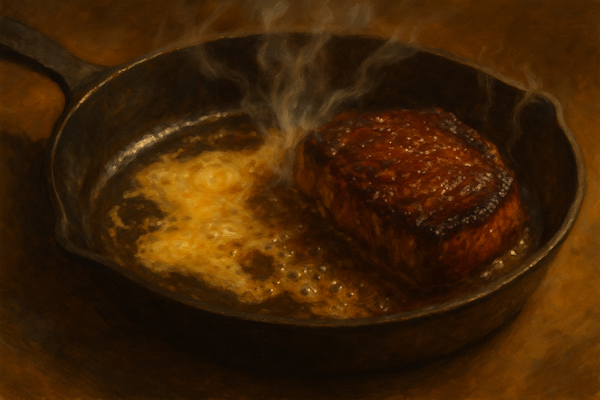
The Scent That Feels Like Home
You know the smell. Toast in the morning. Onions softening in butter. That quiet crackle before dinner starts to mean something.
It’s not just heat at work — it’s chemistry turning familiar ingredients into flavor you can feel.
That’s the Maillard reaction, the scientific name for browning, and the reason food smells like memory when it hits the right temperature.
Most of us chase color without realizing what we’re really chasing is emotion. Browning doesn’t just make food taste better. It makes it taste true.
What’s Actually Happening When Food Browns
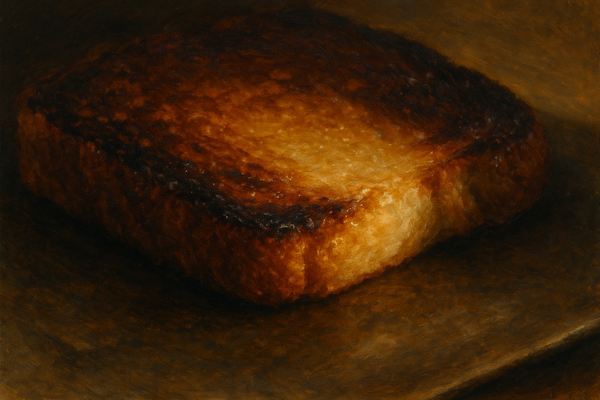
The Maillard reaction starts around 285°F (140°C), when amino acids, the building blocks of protein, collide with sugars.
It’s a messy, beautiful chain reaction that produces hundreds of new compounds, each adding depth, aroma, and complexity.
These new molecules are what create that browned, roasted flavor in everything from bread to coffee to grilled vegetables. They’re the difference between boiled chicken and roasted chicken, between raw dough and a cookie that smells like it could tell stories.
Here’s the elegant part: the chemistry isn’t precise, it’s personal.
Humidity, pH, fat content, and time all change the outcome. That’s why your grandmother’s roast never smelled quite like anyone else’s.
The reaction is universal, but its flavor is intimate.
Observation: Browning is where science stops being theory and starts being memory.
Why Our Brains Crave It
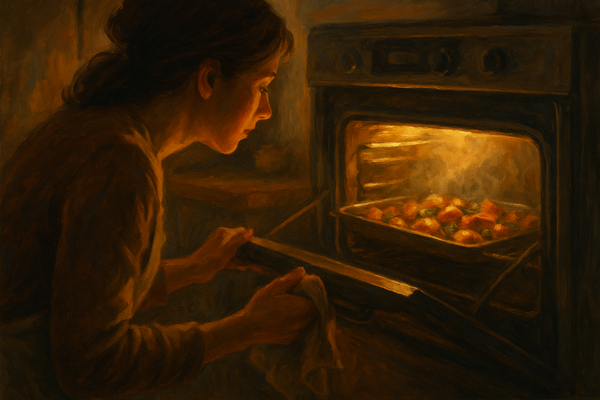
When food browns, it releases volatile compounds, molecules small enough to drift through the air and into your nose. Your brain reads them before your tongue gets a chance.
That’s why the smell of cookies can stop you mid-thought. Those compounds mimic the same patterns found in natural aromas: smoke, coffee, toasted nuts, warm wood. Things our brains file under safe and home.
There’s an evolutionary reason, too. For our ancestors, the smell of browning meant food was safe to eat and full of energy.
That survival signal turned into comfort over generations.
Now, your brain lights up for browned butter the way it once did for cooked meat: reward centers firing, nostalgia disguised as hunger.
Heat doesn’t just cook food. It teaches the brain to relax.
The Art of Control: How to Use Heat Intentionally
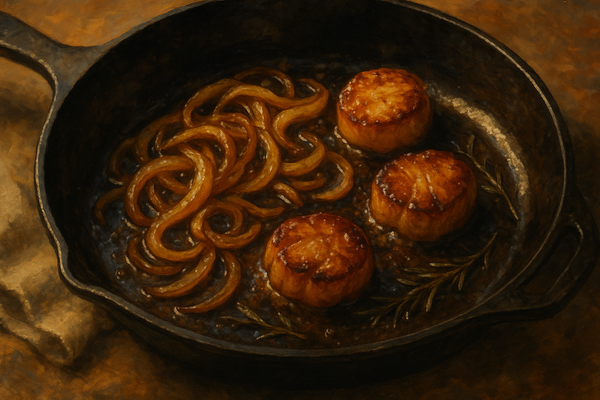
Browning isn’t about high heat; it’s about the right heat for long enough.
You can’t rush it. The Maillard reaction happens slowly, in stages. Too hot, and you burn the sugars before the amino acids can react. Too low, and nothing happens at all.
That’s why good cooks hover. Not because they’re nervous, but because they’re listening.
If you want to cook with better flavor, learn to notice the sounds of heat — the hiss of butter, the moment onions go from sharp to sweet, the way a crust forms under stillness.
Patience is the secret ingredient.
Here’s what helps:
- Dry your food before searing. Moisture stalls browning.
- Use heavier pans that hold heat steady.
- Don’t crowd the surface — steam kills flavor.
- Let color develop before touching. Every flip resets the clock.
Cooking well isn’t about gadgets. It’s about paying attention long enough for the science to catch up to the emotion.
The Science of Flavor Compounds
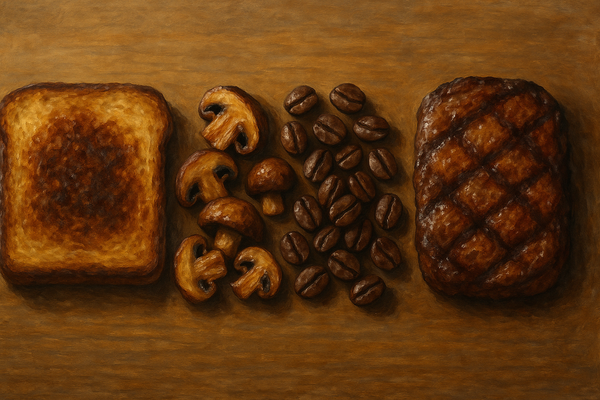
Browning creates hundreds of compounds with names that sound like poetry to a food chemist: pyrazines (nutty), furans (caramel-like), and thiophenes (meaty and savory). Together, they make up what we call “depth.”
These molecules layer flavor the same way chords build harmony. A single browned note is nice; several together feel symphonic. That’s why roasting vegetables at different sizes: so some edges crisp and some soften, making them taste more complex.
It’s the kitchen’s version of jazz: a bit of chaos that turns into beauty.
And here’s the quiet genius of it all: these same compounds appear in toasted bread, coffee, chocolate, and seared meat. That’s why these foods feel connected. They literally share chemistry.
Every golden edge speaks the same sensory language.
Lived-in truth: The reason browned food feels comforting is because it always has — even when it was just fire and survival.
What Heat Teaches You About Cooking (and Patience)
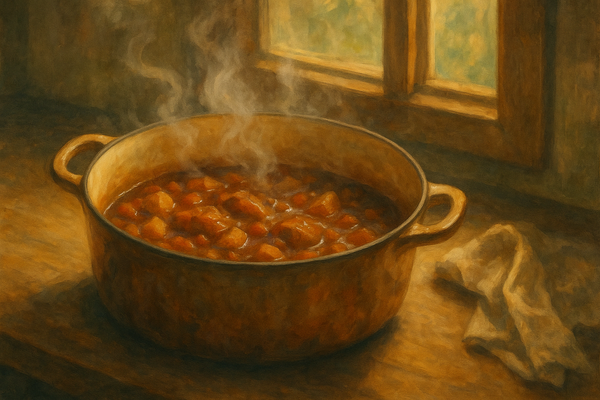
The longer you cook, the more you realize that heat isn’t an ingredient. It’s a relationship. Every flame and surface has its mood, its rhythm. You learn to feel it, not measure it.
The science of heat teaches patience disguised as technique. It rewards stillness, observation, and a little faith. You wait until the edges turn gold. You listen for that shift in sound. You trust that something invisible is happening, even when nothing looks ready.
That’s the secret life of heat: it transforms not just what’s in the pan, but the person standing over it.
Conclusion: Why Browning Feels Like Memory
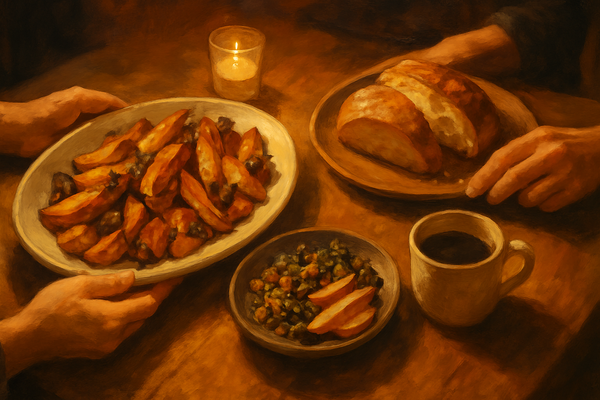
Every kitchen has its own scent of browning: toast, butter, roast, stew. You can’t bottle it or fake it. You can only earn it, one patient minute at a time.
The science explains the reaction. The soul recognizes the result. It’s why food that’s been kissed by heat feels familiar, even when it’s new.
Because the Maillard reaction isn’t just chemistry. It’s how flavor becomes memory. And that’s the real secret: heat doesn’t just cook food. It tells your story back to you.
